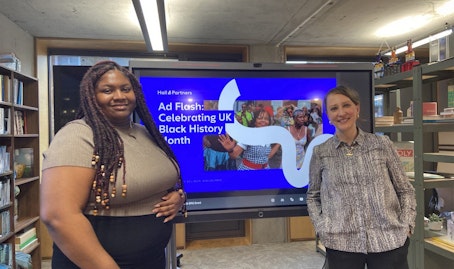Perspectives

Digital advertising has given rise to so many new channels that it can be tempting for marketers to think they need to be active across as many of the options as possible. Miss one or more out, and they worry their media plan will suffer. That means multichannel marketing strategies are adopted for the sake of it, just because they are there, rather than because they are the right channels for the desired outcome.
This has been exacerbated by new formats which can tempt marketers into thinking they need to pick one as their go-to strategy and then use it across as many channels as possible. It’s been particularly evident with the rise of the six second video ad we see on social media sites because so many marketers think they need to use the popular format regardless of what they are aiming to achieve.
The truth is, picking the right multichannel strategy for their brand campaigns is important but priority first needs to be placed on picking an objective and then selecting the best advertising format, creative and channel to deliver it to the desired audience. And it’s where the target audience is to be found that should steer channels, not simply which a marketer feels they should use, just because they can.
How can marketers tailor campaign messages to each stage of the customer journey?
When there’s a fear of getting lost in the weeds on a new opportunity, it often pays to just step back from a moment and go back to basics. The traditional customer funnel may not be a perfect model, but it does encourage brands to think about the stages of awareness, familiarity, consideration and purchase. Each part of the customer funnel is an important step that requires campaign performance insights for advertising and messaging to deliver the optimal outcome.
An awareness campaign, for example, lets people know what you do – we are brand X and we sell X. A familiarity drive would tell them a little bit more about you – we make quality product X with sustainable materials. Consideration might then add a crucial distinguishing point - we’re the most sustainable X maker and offer a money-back guarantee if you are not thrilled. Purchase would perhaps be an announcement of a new line, free shipping or a discount.
As the campaign messaging gets more involved, it may be necessary to move from that six second ad that got the brand name out there to a longer or larger format, such as a lengthier video advert, a print placement, direct mail shot or a billboard. Then to secure a conversion, maybe it’s a case of an email or mobile notification, or a digital display banner launching a sale. The crucial aspect is to remember the format, the message and the channel must fit the task at hand – one size does not fit all needs across the customer journey.
One golden rule that does apply throughout, though, is to make your brand marketing memorable through using distinctive assets, such as logos, taglines, sound cues and talent. A brand needs to be memorable, so it asks as little as possible of the audience. This gets creative over the first hurdle, so a campaign message stands a better chance of landing.
The right platform, not every platform: Why not leverage customer research to identify the best marketing channels?
Channel choices for each of the customer journey stages is best informed by customer research. After finding out who a brand’s key customer segments are, additional research has to be deployed to go beyond their demographic profile to discover where they consume media, and how. Are they avid news site readers, TikTok fans, Facebook posters, podcast aficionados, or maybe they’re either committed streamers who’ve cut the cord or more traditional people enjoying linear tv. With this insight, brands can use data-driven campaigns to reach, and frequency cap, the right campaigns to the right people on the right channel at the right time in the right context.
Even after all this work is put in and campaigns are crafted and executed, marketers need to cut themselves some slack with campaign data. It’s obviously very important but we all need to remember it is not perfect. It can sometimes be difficult to know who was exposed to an advert and for how long, particularly when people share devices or switch between home or work mobiles and laptops.
Data will give a fairly good idea, if not perfect, but the best approaches will always include some customer panel research. That will give a better idea of reach and whether attention was paid because, at Hall and Partners, we have always found the best indicator of future conversions is unaided recall of a campaign. That is the type of feedback you can only get through research.
7 actionable multichannel marketing tips for marketers
- Segment and know your audience – who are your customers? where and when do they consume media?
- Analyse your customer funnel – where are people falling off? where is the help needed to push people towards conversion?
- Decide an outcome, fix the channel – once you know what you want to achieve pick the format and channel that will deliver that outcome.
- Keep it simple – people will not remember complex messaging. Ask them to remember just one thing, maybe two.
- Consistent distinctive assets – to be memorable across all channels and formats stick to the same colours, logos, straplines, sounds and talent.
- Don’t get lost in the weeds – too many marketers sweat the small stuff but targeting on digital marketing is imperfect. Stick to the big missions and follow the simple steps.
- Rely on customer research – if you want to know who your audience is and how your campaigns are impacting them, data is useful, but it is best augmented by real customer research.
Rethinking “Go-To” channels: Why one size multichannel marketing approach doesn’t fit all
Marketers who have become accustomed to a set ‘go-to’ multichannel route that was chosen just because those channels are there, might want to take a moment and think again. Instead of applying the same mix, because you can it’s easy, pick the desired outcome, decide which part of the funnel you need to influence, and then work backwards to establish how it can be done.
One thing is for sure; it will not be the same answer to all customer segmentations across each step of the customer journey.
Just as a triathlon athlete would find it difficult to swim on their bike, not every step of the customer journey can be influenced by the same strategy.
Talk to our team of experts
Learn how we can deliver actionable insights and creativity to drive brand growth.








